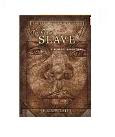
 I love the Dr. Seuss books! They have such a funny language uniquely their own; children love the language too. The books really help with phonics and decoding because of the nonsense words. I also love the lessons that they teach. While many of his books are left to interpretation, most readers come away from the books gaining some insight.
I love the Dr. Seuss books! They have such a funny language uniquely their own; children love the language too. The books really help with phonics and decoding because of the nonsense words. I also love the lessons that they teach. While many of his books are left to interpretation, most readers come away from the books gaining some insight.Childhood according to Dr. Seuss, is a “perpetual zig-zag between good sense and nonsense, between the anarchy of The Cat in the Hat and the selfless stoicism of Horton (who hatched an egg).”
a. Is there a contemporary book that has this tension presented in The Cat in the Hat?
The Cat in the Hat is so cute, and teaches children the lesson about how too much of a good thing is not always good. We all need routines, rules, and “normalcy” in our lives. This book is especially good to read to young students because this can lead into a discussion about why we have classroom rules, community laws, etc. I honestly can’t think of a book that has the “tension” present. I just think that this is a silly book for kids to enjoy; sometimes, Dr. Seuss can be overanalyzed and I think this may be the case.
b. Does this book still appeal to children and why?
This book appeals to children because of the nonsense and silliness. The book is fun to read and the language is fun to try to pronounce and make sense.
Dr. Seuss considered The Lorax, published in 1971, as his best book. It did not go over well at the time and is still controversial.
a. What makes The Lorax didactic?
I definitely feel The Lorax it is didactic in the fact that it teaches that greed and wastefulness can lead to the destruction of Earth. This book makes children think about and discuss pollution and harm that is done to our animal populations too, and leads to discussions about animal extinction.
b. Are there any didactic children’s books today? If not, why not?
There are didactic books today. The Patricia Polacco books discuss issues too, and can be explored further. One example is Thank you, Mr. Falker; this book is an autobiographical account of Polacco's battle with dyslexia. This book deals with bullying and teasing issues, and shows kids how words can hurt others. Another book by Polacco, title Thunder Cake teaches readers that it is okay to have fears, but that they can be overcome. A lot of the books listed on my blog could be considered didactic in that any reader can often make a personal connection to a book and how it relates to his or her life. Readers often also search for a message or a moral to the story. No, David by David Shannon teaches readers a lesson that despite their shortcomings, their parents will continue to love them. Another great book, I can’t remember the title or the author for anything (as soon as I find it, I will post it) is a book I read a couple months ago about an African American elderly man who could not read, but wanted to. A little boy helped him to read; it was such a sweet story and gave a powerful message to children.












